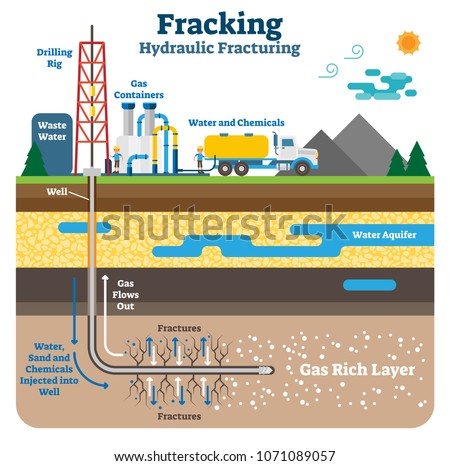The secret to fossil fuels ability to produce energy is that they contain a large amount of carbon. This carbon is left over from living matter — primarily plants — that lived millions of years ago. Oil and natural gas are usually the results of lots of biological matter that settles to the seafloor, where the hydrocarbons(molecules of hydrogen and carbon), including methane gas, become trapped in rocks.
Petroleum sources are usually small pockets of liquid or gas trapped within rock layers deep underground (often under the seafloor). Extracted crude oil is refined and used to manufacture gasoline (used in transportation) and petrochemicals (used in the production of plastics, pharmaceuticals, and cleaning products).
1. THE ENVIRONMENTAL IMPACT OF DRILLING FOR OIL
Oil companies pump liquid oil out of the ground by using drilling rigs and wells that access the pockets of oil resources. The oil fills the rock layers the way water fills a sponge — spreading throughout open spaces — instead of existing as a giant pool of liquid.
This arrangement means that to pump out all the oil, drillers have to extend or relocate the wells after the immediate area has been emptied. Oil drilling rigs set on platforms in the ocean to access oil reserves below the seafloor must, therefore, employ a series of more technically complex drill rigs built to access oil reserves in deeper water.
The below figure illustrates some of the most commonly used ocean drilling rigs and platforms and the water depths they’re most suited for.
![[Credit: Illustration by Lisa Reed]](https://www.dummies.com/wp-content/uploads/340344.image0.jpg)
2. THE ENVIRONMENTAL IMPACT OF FRACKING FOR NATURAL GAS
Natural gas is a relatively clean-burning fuel source — it produces approximately half the CO2 emissions that coal burning produces — so the demand for natural gas has increased in the last few decades as concerns grow about carbon emissions and global warming.
Now fuel producers are exploring natural gas in reservoirs separate from petroleum as sources of this fuel. To release the gas from the rocks and capture it for use as fuel, companies use a method of hydraulic fracturing or fracking.
The sand and chemicals are left behind in the rock fractures, leading to groundwater pollution and potentially less stable bedrock. Currently, scientists are concerned that earthquakes in regions of the Midwestern United States that have never experienced earthquakes before are the result of wastewater from natural gas fracking operations.
Credits: Dummies.com


No comments:
Post a Comment